When I originally devised my route through the Western Pacific region—always intended to be the last major section of the World2 Tour—there were a number of locations that I was particularly interested in visiting, as well as a handful that I basically included as bridging sections, intended to make my route more continuous, with a minimal amount of air transfers. With regard to the latter aspect, after considerable study and effort I was eventually able to put together a plan that would allow me to cross that large quadrant of the globe primarily by bicycling and marine transport, a plan that would, of course, need to be tossed in the garbage in 2020, along with all of my other route goals. However, once I was ready, and eventually able, to move on from Fiji, I was pleased to learn that one of the locations from my original list for that section, in fact, one of those that had especially interested me, had recently begun to allow limited numbers of international visitors to enter once again. Though, as I have alluded to elsewhere, while that particular destination lies a reasonable one thousand three hundred kilometers in distance from Fiji, because of limited transport options available at the time my only realistic possibility for moving on to that country required a transit through Sydney, a total flight distance that was four times longer, not to mention considerably more costly and excessively bureaucratically complex.
Specifically, the location in question was the lovely island of New Caledonia, or, as I should more properly say, Nouvelle-Calédonie. There were a few main reasons why I distinctly wanted to visit that island, some of which I will return to momentarily, but primarily it was because going there allowed me to correct an oversight I made several years ago. In so doing, New Caledonia also became a place of particular importance for the World2 Tour in general, another aspect I will mention again below.
First, however, I will briefly touch on the usual types of general information that are relevant for a typical tour. The majority of the population on the island are from Melanesian heritage and collectively they are known as the Kanak people. However, in the mid-nineteenth century France occupied the island, initially mimicking British Australia by establishing a penal colony there, and holding onto it ever since, with the island's productive nickel mines presumably being a major reason for that. Consequently, a significant number of European-French citizens relocated there over the years and most remain to this day, though a large fraction of them reside in the capital, Nouméa, and a few of the larger towns. Politically, the island is an official part of the French Republic, similar to territories such as French Guiana, Martinique, and St. Pierre and Miquelon, but after tensions developed in the twentieth century a quasi-devolved system of government was gradually put in place, with full independence still remaining a goal for many, and an issue that will probably remain ever-present.
Of course, French is the official language, and some other aspects of French culture are particularly noticeable, including the types of foods that are typically available, the sometimes-annoying mid-day closures of certain shops and businesses, and the occasionally painfully-late dinner hours of restaurants. Paradoxically, though the island is a part of France, the currency in use there is not the Euro, but rather the Central Pacific Franc. For a time, that blinded me to the fact that New Caledonia was one of the most expensive locations I had been to in a long time, certainly up in the top five most costly countries of the Tour, and that was definitely something I didn’t really need at the time. In terms of climate, the island’s location to the southwest of Fiji, and to the northeast of Australia, give it constantly warm conditions, though with a noticeably lower humidity than most of the recent places I had been, a fact that was greatly appreciated. However, I was told that, with 2022 being a La Niña year, the amount of rainfall at the time was much higher than usual, a situation that affected me on a few occasions, but also did keep the surrounding landscapes pleasantly green.
At the time, vaccinated travelers were allowed to enter, though I, and all of the others, were required to self-isolate in Nouméa for seven days in pre-paid accommodations as a condition of entry. During that period, one was required to take two Antigen tests for Covid, which, pleasantly, were free of charge, but did require one to wait in a long, swelteringly-hot line in order to be swabbed. After an unexpected two weeks of inactivity before leaving Fiji, I really didn’t need another long break, however, at least this time the view was better.
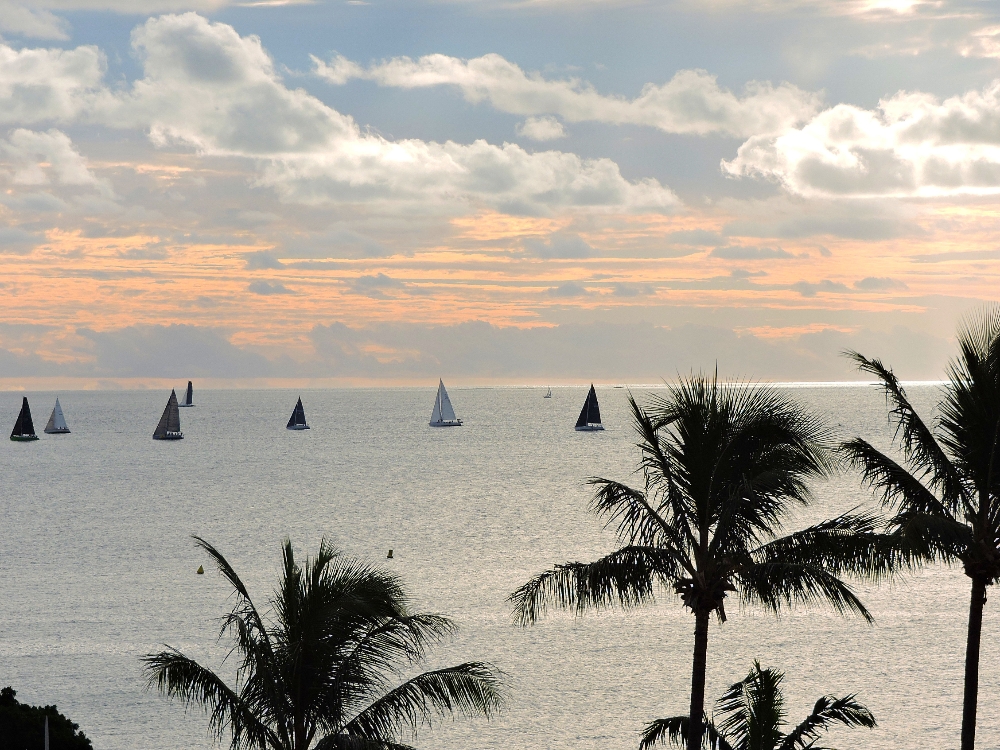
In a similar manner to what Palau and Fiji had put in place, this was not a strict quarantine, but more loosely designed. I was able to go out for food, to shops or for take-out, and the rules allowed for one hour of outdoor exercise, provided that was done alone and a form was filled out and given to the hotel before leaving. With my barely-recovered level of fitness at the time, I had no problem with the one hour limit, but the policy also stated that one could not go beyond a one kilometer radius from the accommodation, which has always been a ridiculous rule, in any country, and one that I did not mind breaking in order to fit in a daily fifteen-kilometer ride. One of the other notable, and commendable, features of French culture present on the island is a modest cycling culture, probably the most noticeable example of that I have seen since I was in Europe, proper. In this case that meant that Nouméa possessed at least a few good-quality cycling paths, mostly used by recreational folks and roadies, like the one shown below, which made my isolation-period exercise somewhat more enjoyable. However, overall, Nouméa was a slightly hard place for me to come to terms with. Many of the the buildings there appeared to be only twenty or thirty years old and the overall urban design exhibited a feel that was not-quite-European, not-quite-American, and not-quite-Asian. With all of that being located on hilly, coastal terrain in the tropics I struggled mentally to think of another place I have been to previously to compare the city to, but totally failed to come up with anything adequate.
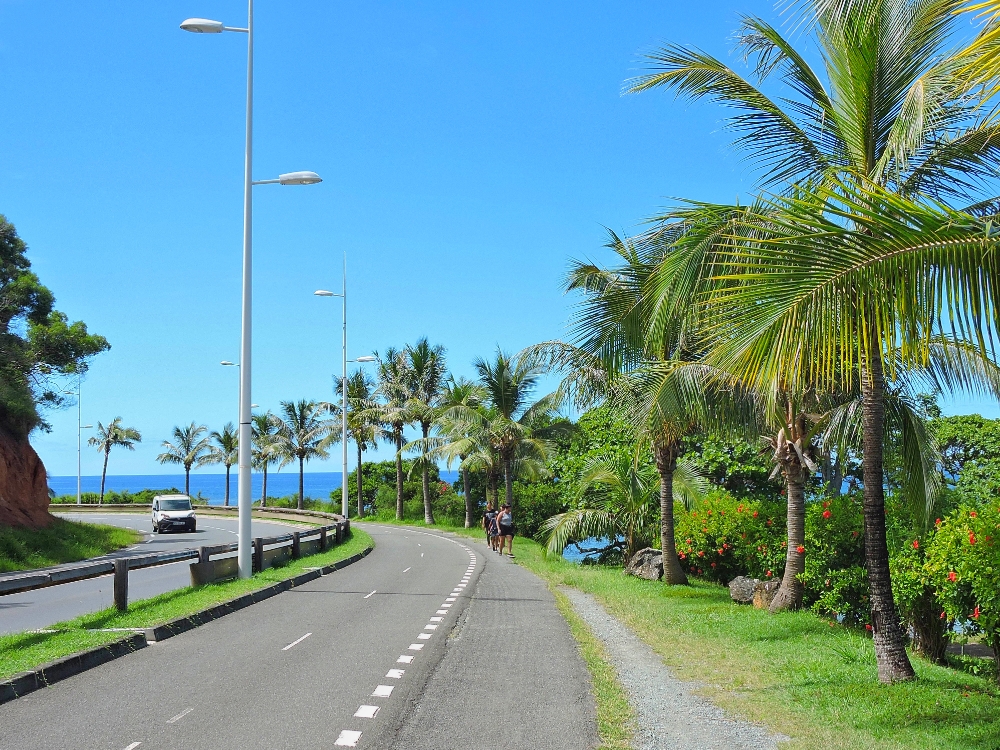
When the time arrived to finally tour the island, I knew that I would make this a more relaxed version compared to what I normally would have done. As a very anticipated destination, I had originally come up with an extensive route that would take me to most parts of the main island, known as Grande Terre, for a total of over eight hundred kilometers during two weeks. With the circumstances of the previous six months being what they were, I reduced that distance by one third, and the limited available flight schedules gave me an extra week to cover that minimal route, so that seemed to me to be appropriately unstressful. However, after another long layoff, the first day out ended up being rather exhausting, compounded by the fact that the sprawl of the capital, including a rather surprising amount of light industry, continued on for longer than I had anticipated.
My first destination was a small town near the center of the long, thin island, called La Foa, which I planned to use as a base for two days of relatively short sightseeing rides and an included rest day. After leaving the capital the route there was, I have to say, just barely average. The road surface was in fairly good condition, though shoulders were only present about half of the time and the traffic was unpleasantly heavy. I was a little baffled by that because, even though I was on the country’s main highway, there are only a few rather small towns located in the northern part of the country, so I was not really sure where everyone else was going. Nevertheless, along the way I did continue to experience one of the factors that drew me to the country in the first place. New Caledonia is notable for is extremely high number of endemic plant species. In fact, for a botanist, the island could be Paradise. I am not a member of that profession, but I always enjoy seeing interesting and beautiful plants and trees. In this case, the most impressive examples for me were those from the eighteen species, most of them endemic to New Caledonia, of the family Araucariaceae, a distinctive and ancient lineage now found primarily in the southern hemisphere, and one which I enjoyed seeing in several countries during my previous long tour.
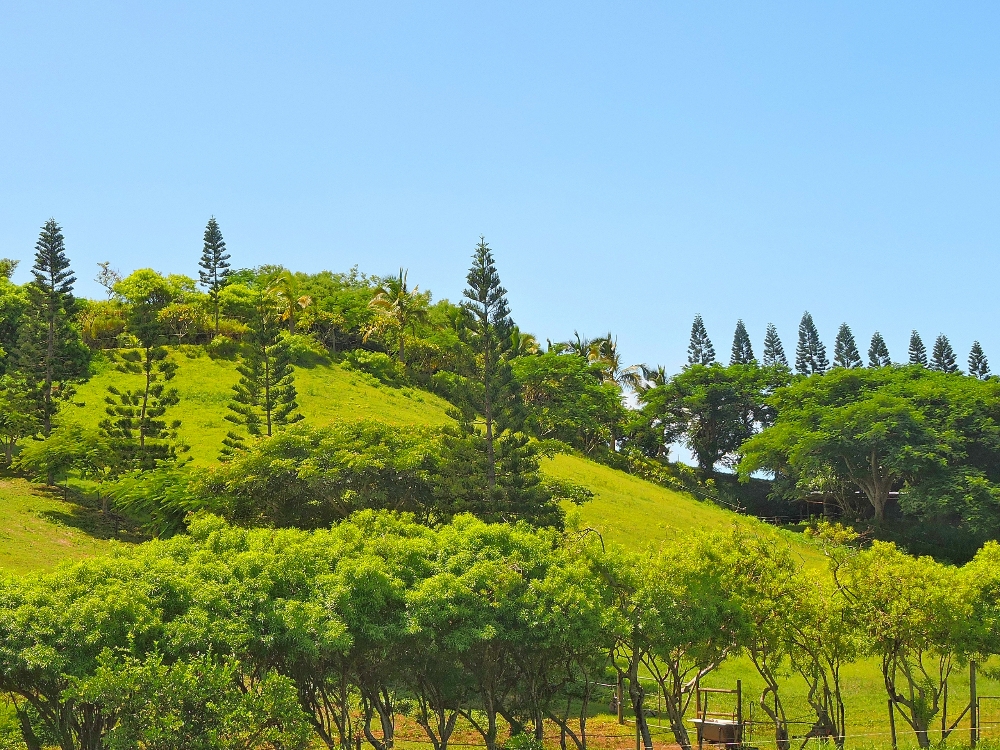
One of the day-rides I took from La Foa was just a hop over to the nearby coastline to see the famous meeting of land and water there. As it turned out, the route I chose was probably not the best to be able to appreciate the shoreline, at least not without a boat, but it was a pleasurable ride anyway. One notable sight was a remnant of the early penal colony period, a former prison called Fort Teremba.
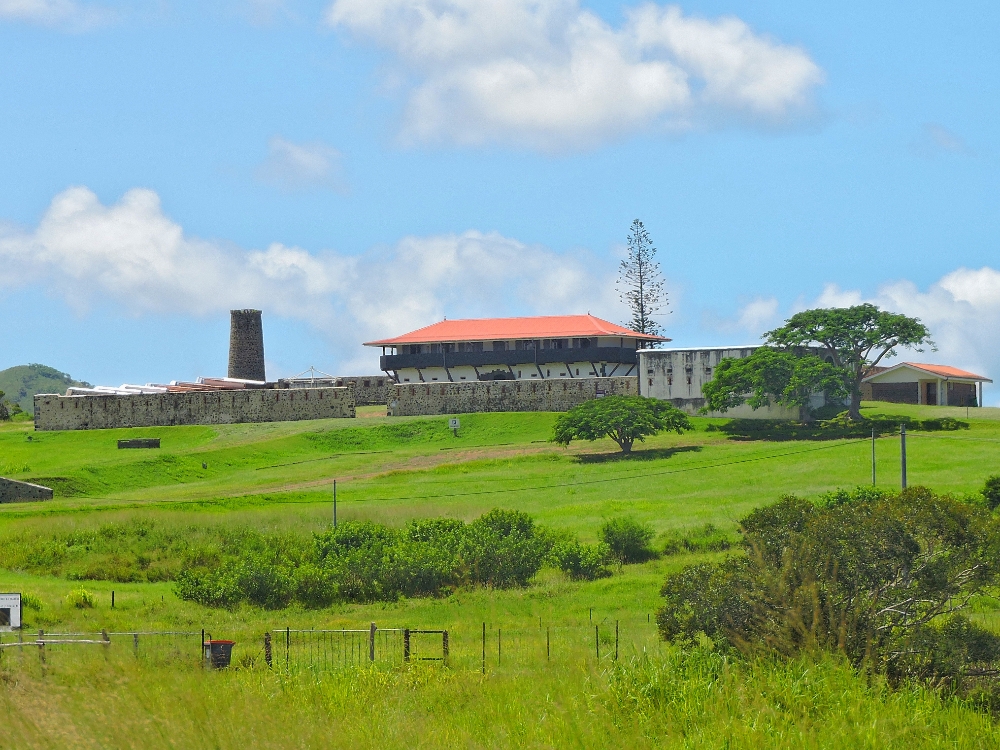
The other day-ride from there was to the Parc Provincial des Grandes Fougères, which contains an excellent section of native forest. The route there included a five hundred meter climb, which, quite sadly, was the greatest single gain I had to make since I was in Kenya. Under the circumstances, I was a little concerned about my ability to do that one without too much difficulty, but thanks to some cloudy skies and the ability to leave most of my gear in La Foa, it was not too bad. I was glad that I included that visit because that park provided one of the most enjoyable forest walks I have done in a long time.
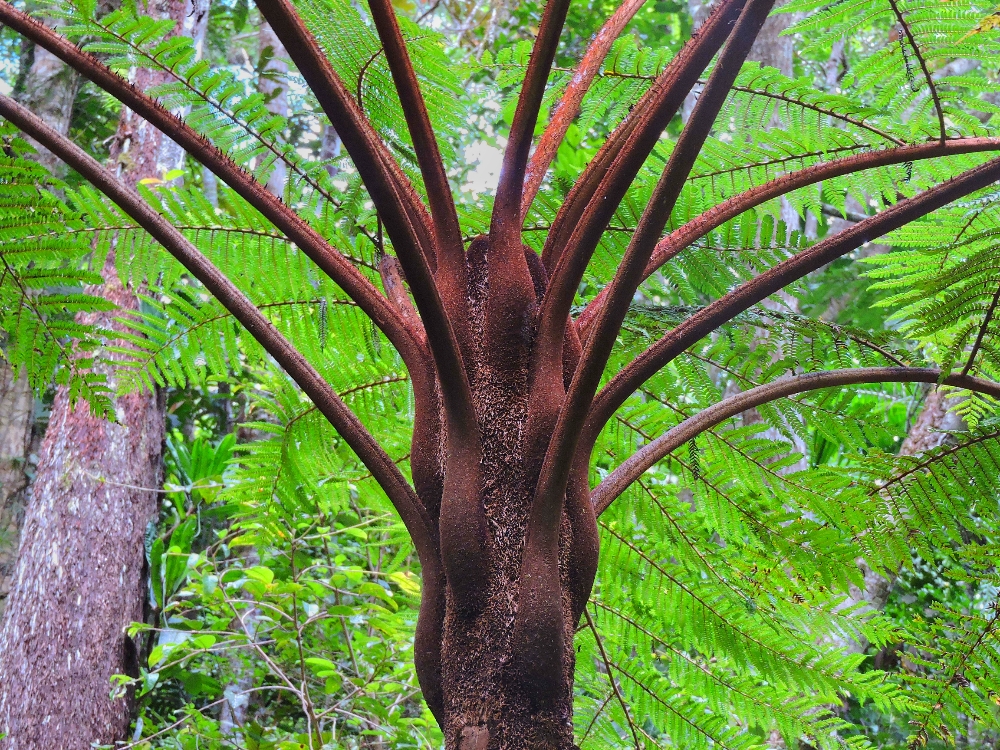
Giant Ferns, such as this Brown-Heart Fern
La Foa itself was a reasonably pleasant small town, and I decided to spend an extra day there, in part because I really wasn’t thrilled about next having to double-back through Nouméa again, but also because I rather enjoyed the historic Hotel Banu, which was very friendly, had a nice restaurant, and was one of the only reasonably-priced places I stayed in the country. In the second image below, sharp eyes will be able to locate my special Tour hat, which is (temporarily) hanging among over five thousand others in the reception area.
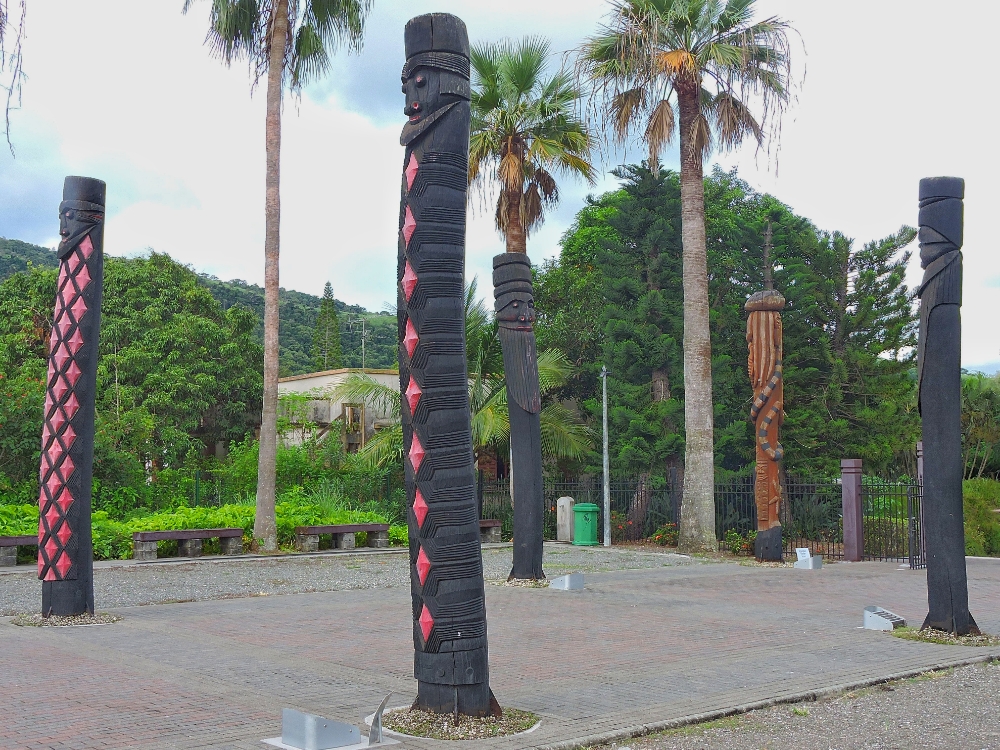
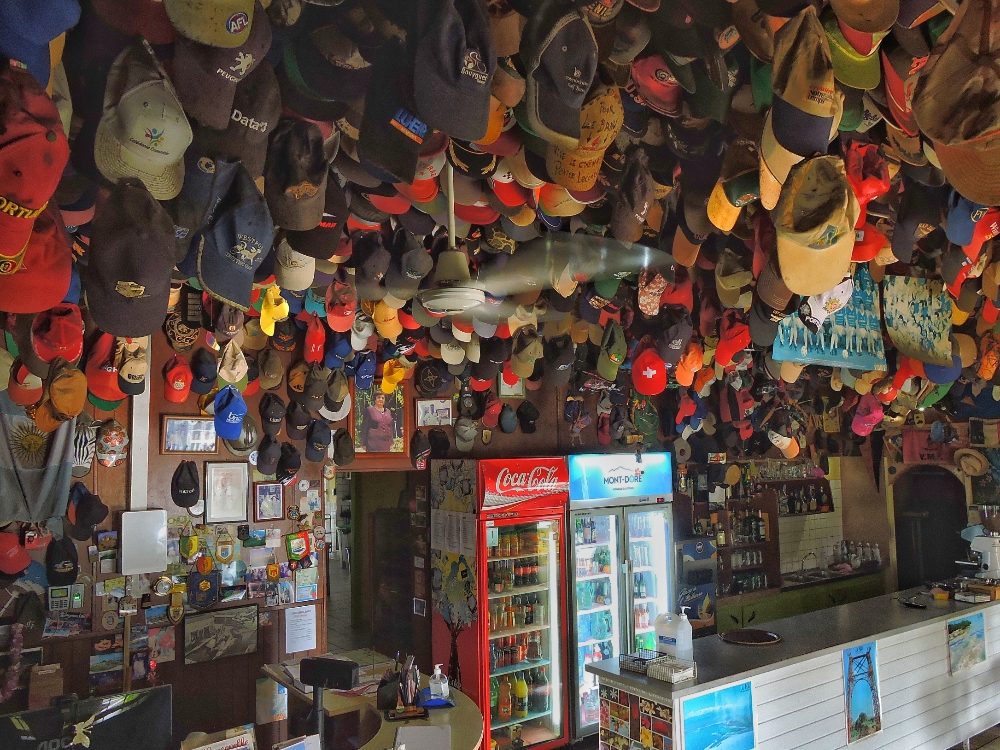
My next stop, after a workman-like ride back to, and through, the capital, was another famous park, Parc Provincial Riviere Bleue, a destination notable for both botany and birds. There is a small campground there which has tiny A-frame cabinettes and I planned on staying two nights there, giving me a full day to visit the park. That started out as an excellent plan, as there were some nice birds around the campsite, and the following day provided one of the most interesting rides I have taken in a long time. The park is filled with a great number of microclimates, and these perfectly showcase the islands incredible plant life. Almost every leafy object one sees there is found nowhere else. Even better, after a few kilometers the surprisingly-excellent-quality gravel road crosses a wooden bridge, beyond which only official vehicles are allowed, so I essentially had the entire park to myself. I am only being slightly imaginative when I say that it felt like I was cycling through the Jurassic Period, only without the megafauna.
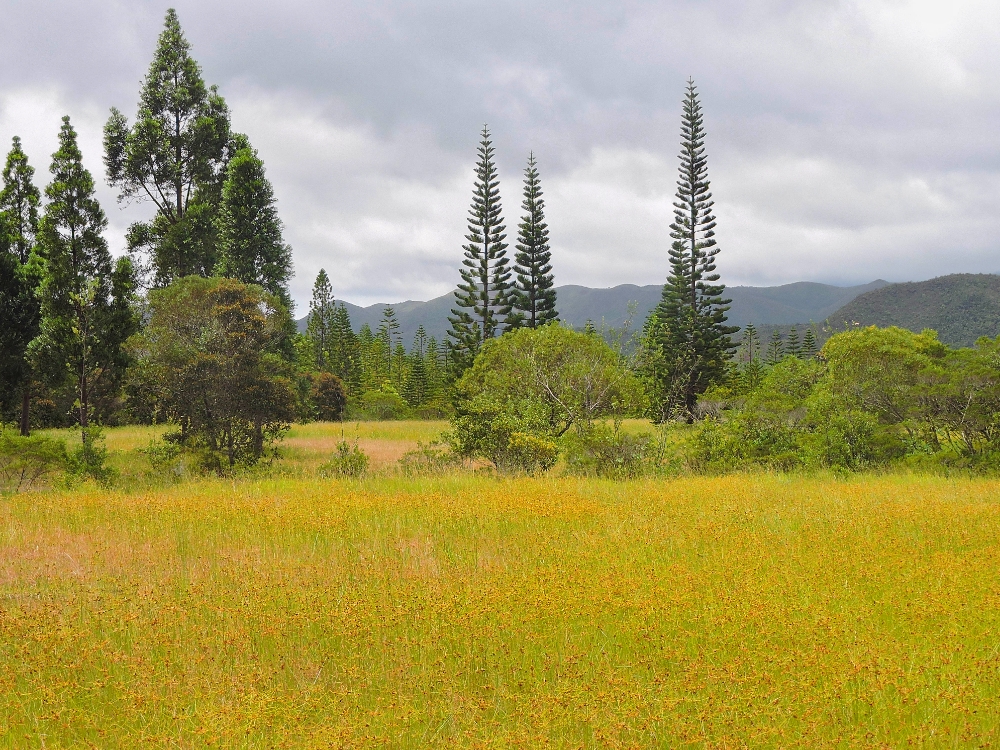
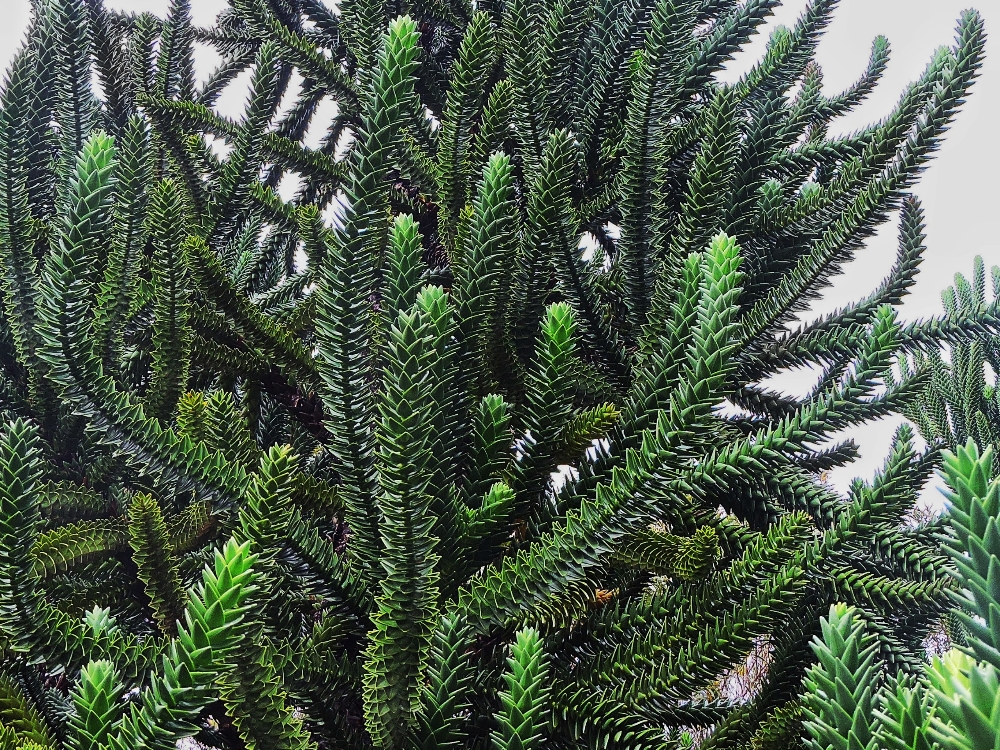
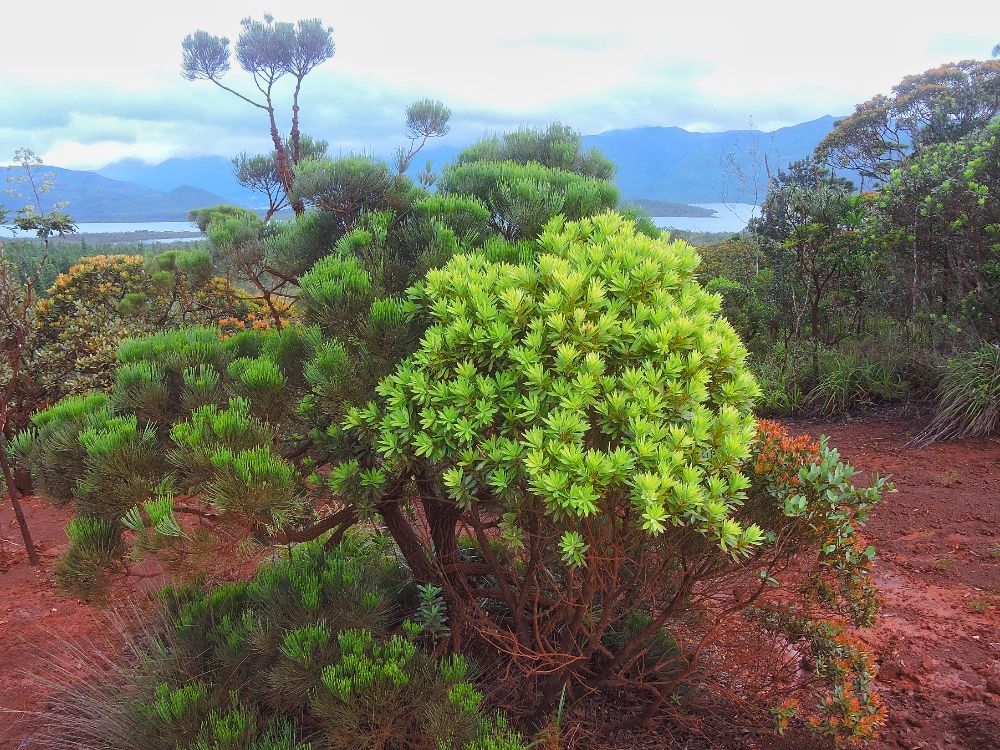
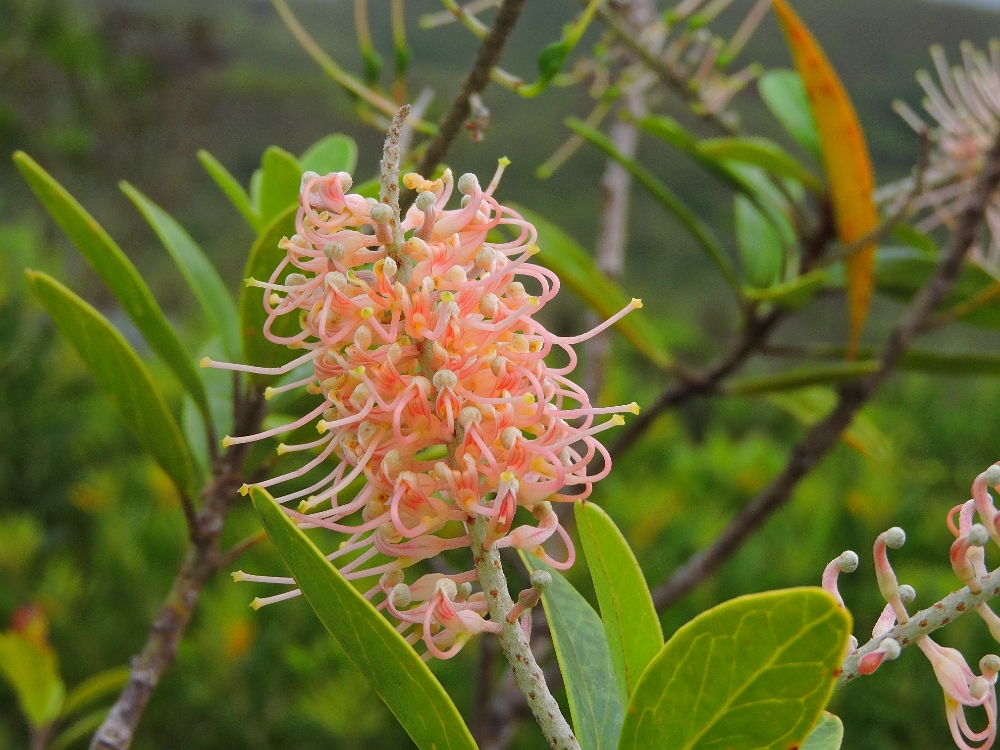
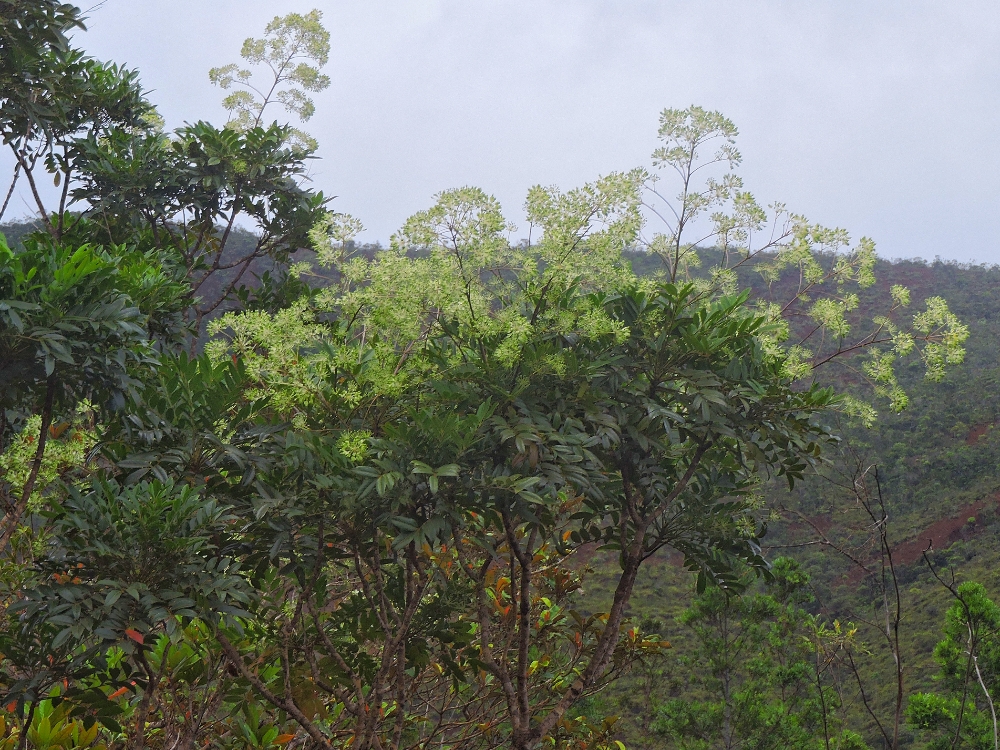
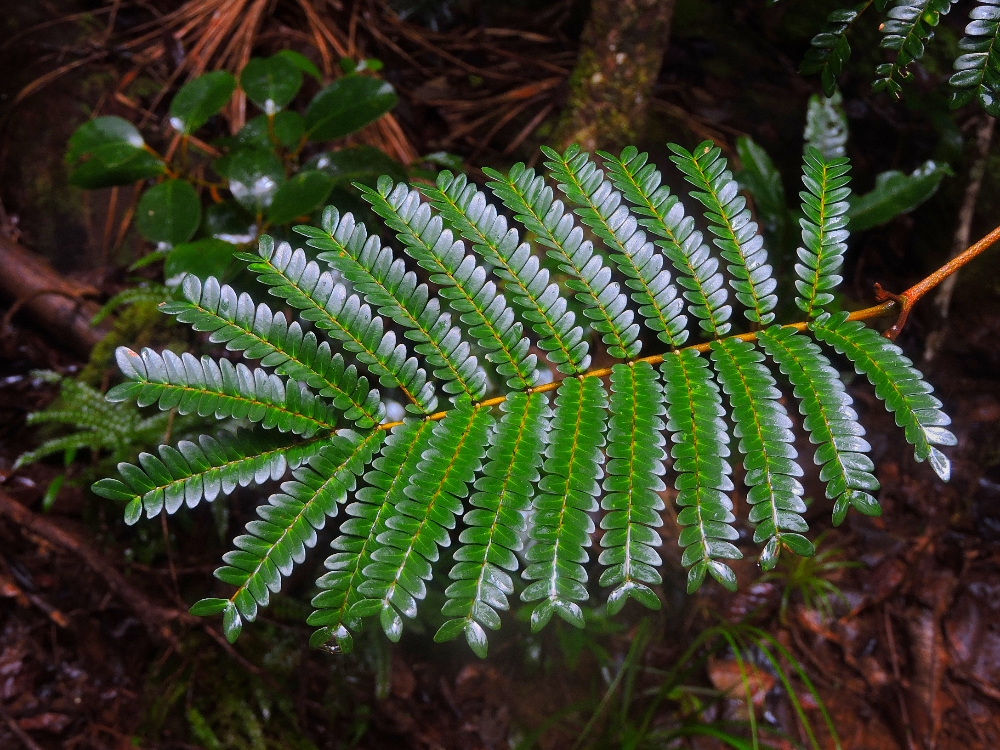
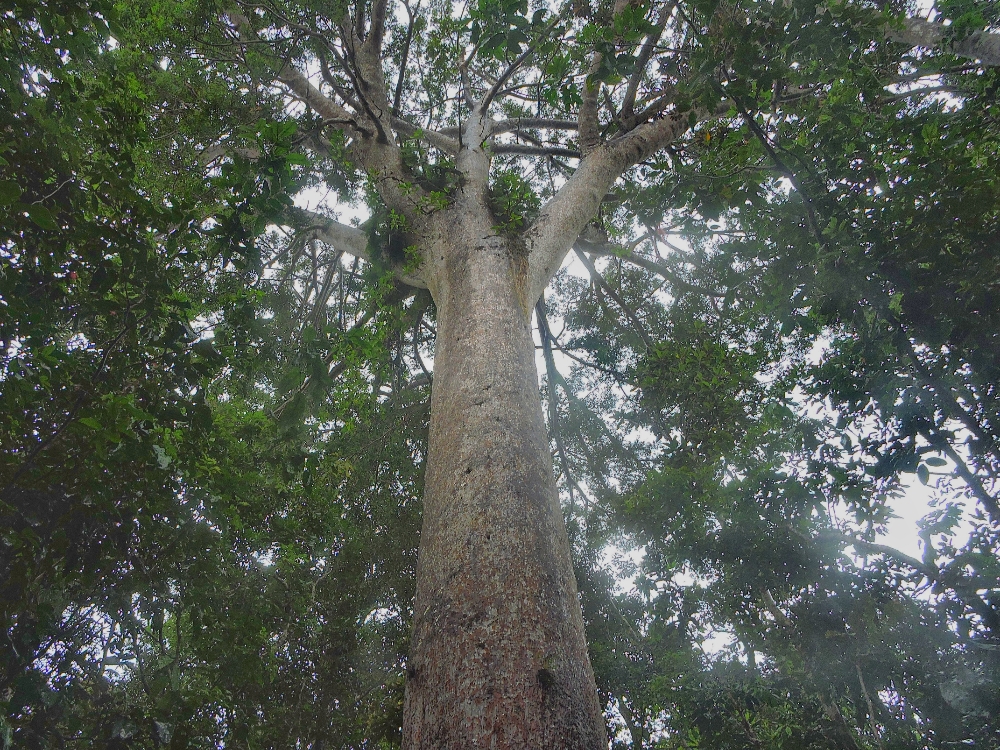
After that enjoyable day came an unexpected disruption. Originally, I had planned to loop back around the southern tip of the island to return to Nouméa and while, in years gone by, I could have completed that distance in a single long day, under the circumstances I had envisioned doing it in three. However, food and services were quite sparse along that route and at that point in the Tour I really didn’t feel like dealing with such a situation again. So I shortened the plan significantly, and then did that one more time, finally opting for a direct route back to the capital in one fairly easy day in order to take a rest and take care of a few errands. As luck would have it, all of those considerations turned out to be moot, anyway. For on my second night in the Park, just after my dinner, as it was getting dark, the caretaker of the campground came by anxiously trying to tell me something. It took quite a long time, filled with broken French and broken English, but, eventually, I realized that the campground was being closed and I, and the two other visitors, were being told to evacuate. Apparently, Cyclone Dovi had formed rather suddenly just to the north and was expected to strengthen and make landfall nearby overnight. That posed an extra problem for me, since there was no secure place to stay between the park and the city center, about a three-hour ride away, complicated, as it was, by darkness and a bit of slightly mountainous terrain to cross. Fortunately, one of the park employees had a spare room in her house and offered it to me for the night, which was very much appreciated. In the morning, it hadn’t even started raining yet, so it was fairly easy to ride the last thirty kilometers into the city, aided by the fact that there was a Level 1 Alert in place, which meant that all the roadways were totally deserted, allowing me to do things like ride along the empty express bus lanes. Of course, in the end, the cyclone tracked further east, only slightly affecting the nearby area.
That left only my last destination, l’île des Pines, a smaller, and very beautiful island not far off the southeastern tip of Grande Terre. That particular island was initially named Isle of Pines by Captain James Cook, when he observed its numerous Araucaria trees, which there frequently adopt a columnar form, giving the island a distinctive appearance. I was able to reach the island by ferry, which was nice, but there were no return sailings, because of some sort of scheduled maintenance break. Therefore, I was forced to take a short flight back, which was completely undesirable, but since I would soon fly out of the country anyway that really only meant I just needed to pack up the bike a little sooner.
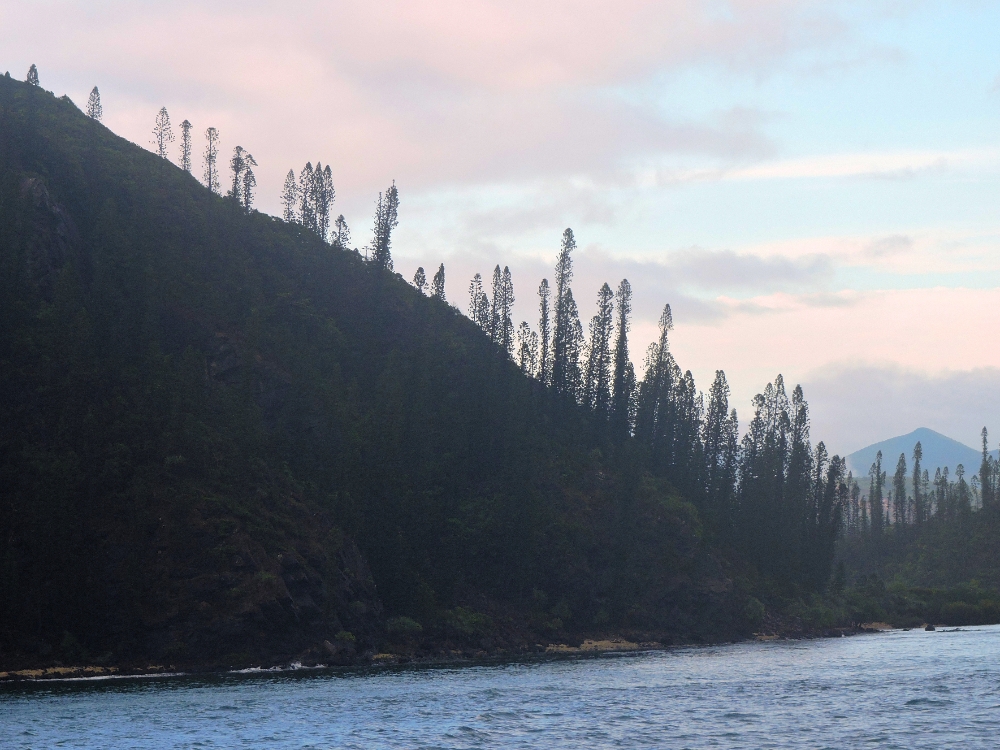
In addition to being an exceptionally pleasant place to visit, l’Île des Pins became a very important place for the World2 Tour, in general. For some time I had been seeking out an appropriate place to become the new official end point for this longer-than-expected, and overall goofy, Tour I have been on. When planning a Grand Tour, I always try to make the Ultimate Destination some sort of location that would be worthy of all the preceding efforts. For my previous long Tour, I chose the Grand Canyon, and I successfully made it there. This time, the plan was to end with another crossing of the Pacific by container ship, thereby completing another circumnavigation. Obviously, that option was removed by the current travel situation. Next, I had my eye on one of the larger counties in this region, which contains a certain very large National Park that would require some strenuous cycling to reach, possesses an absolutely stunning list of resident birds, and is a seldomly-visited World Heritage Site. That became my goal for a long time, but, even being as patient as I possibly could, I was not able to wait any longer for that country to eventually reopen. Then there was another archipelago nation not far from here that possesses an uncommon and dramatic natural feature of the type that has long been one of my Bucket List items, so I was going to try for there. Similarly, though that country had spoken of reopening soon, that decision was still pending, and would certainly come too late for me. At that point my suitable candidates seemed few in number.
Then I realized that I really didn’t need to look very far, after all. In addition to its cultural and botanical attractions, New Caledonia, is also a fascinating place from a Geological perspective. Specifically, it is a small, isolated fragment of the ancient supercontinent called Gondwanaland. For my first Grand Tour, named the Tour of Gondwana, I had the goal of cycling through all the pieces of that former landmass, except Antarctica, which, I am pleased to say, I accomplished successfully. However, in the process, I somehow failed to visit the little portion that is now called New Caledonia. After so many years, I can no longer remember whether I considered going there, but decided against it as being too insignificant, or too complicated to reach, or whether I simply never realized that I had neglected it. In any case, over the years that simple omission has continued to nag at my sensibilities. So one day, when I realized that I could both finish
the World2 Tour and finally complete
the Tour of Gondwana, in the same place and at the same time, I knew that I had found an appropriate ending point. It felt satisfying.
Therefore, the little-known, but extremely beautiful, small island called the Isle of Pines became the Official
ending point for the World2 Tour, a location that has been veiled in mystery, even to me, for the past two years. Now it must be apparent to everyone that is was a wise decision for me to withhold the original route plan from being revealed within the Cycling Introduction section of this Site. Appropriately, once I arrived on the island I realized that it was also a perfect ending point from an esthetic perspective as well. For that island was one of the more exceptionally pleasant places that I visited, especially for cycling, during a Tour that was frequently bereft of such locations. The island is lightly populated, meaning that the one small road that circles its area is usually in fine condition and carries almost no motorized traffic, so my loop of its coast was particularly enjoyable. Therefore, on my second day on the island, what would be the final official day of the Tour, I undertook a short, but enjoyable, ride to the Upi Bay, in order to make my primary visit to the Lagoons World Heritage Site, while adding a nice new bird to my list along the way. All three of the primary activities successfully accomplished on the last day, just as it should have been. To put a nice note to the ending, once I returned to Nouméa I spent my final nights in the country staying at the Gondwana Hotel.
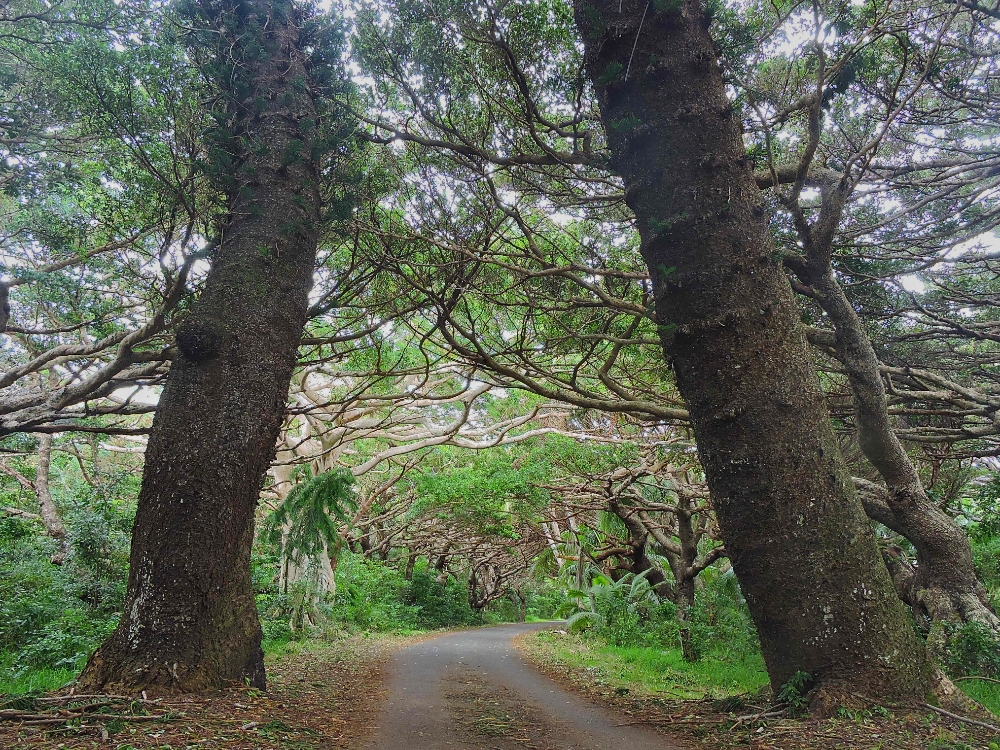
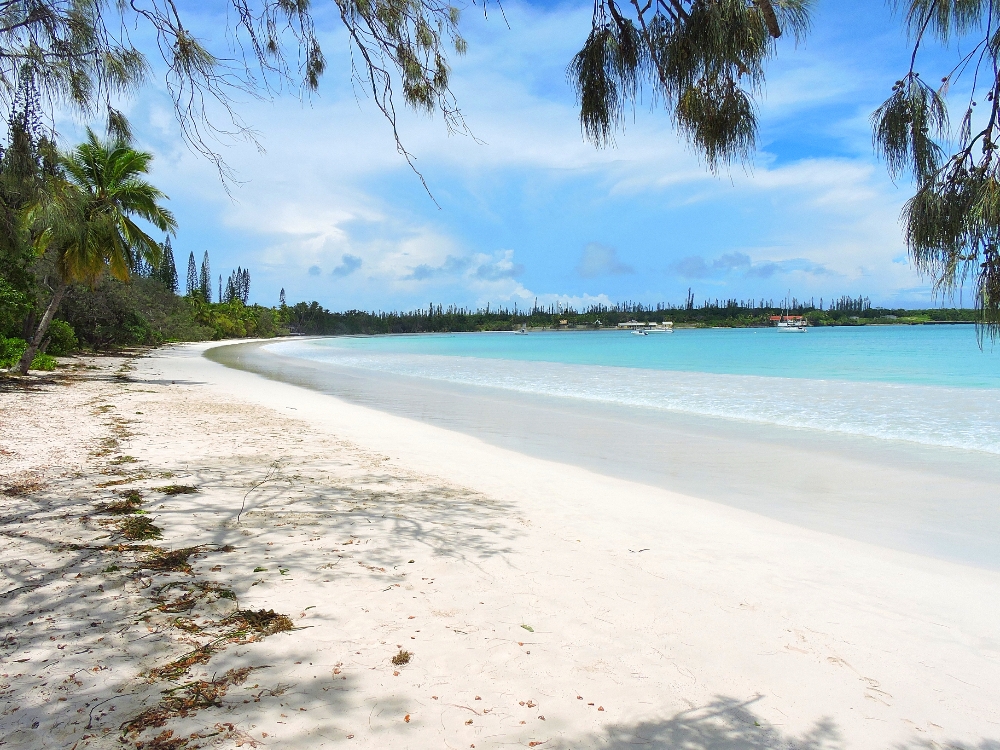
However, the story is not quite over just yet. Many enjoyable and beautiful pieces of music include a Coda, a short section, often with a somewhat modified theme, placed at the end of the piece in order to provide a more appropriate conclusion. Since I am currently several thousand kilometers away from the Ultimate Destination, with no direct route available to get there, the World2 Tour will also include its own form of a Coda. This section will, more or less, include at least some amount of the three activities at various intermediate stops along the way, so check back here for whatever may come to pass. Hopefully, the Coda will also include abbreviated visits to a few places that I had originally planned to see during the second year of the Tour, but which I was forced to bypass at the time. It is hard to say for sure, however, as World events have already forced me to make last-minute adjustments to this hastily-arranged plan.
Slava Ukraini!!